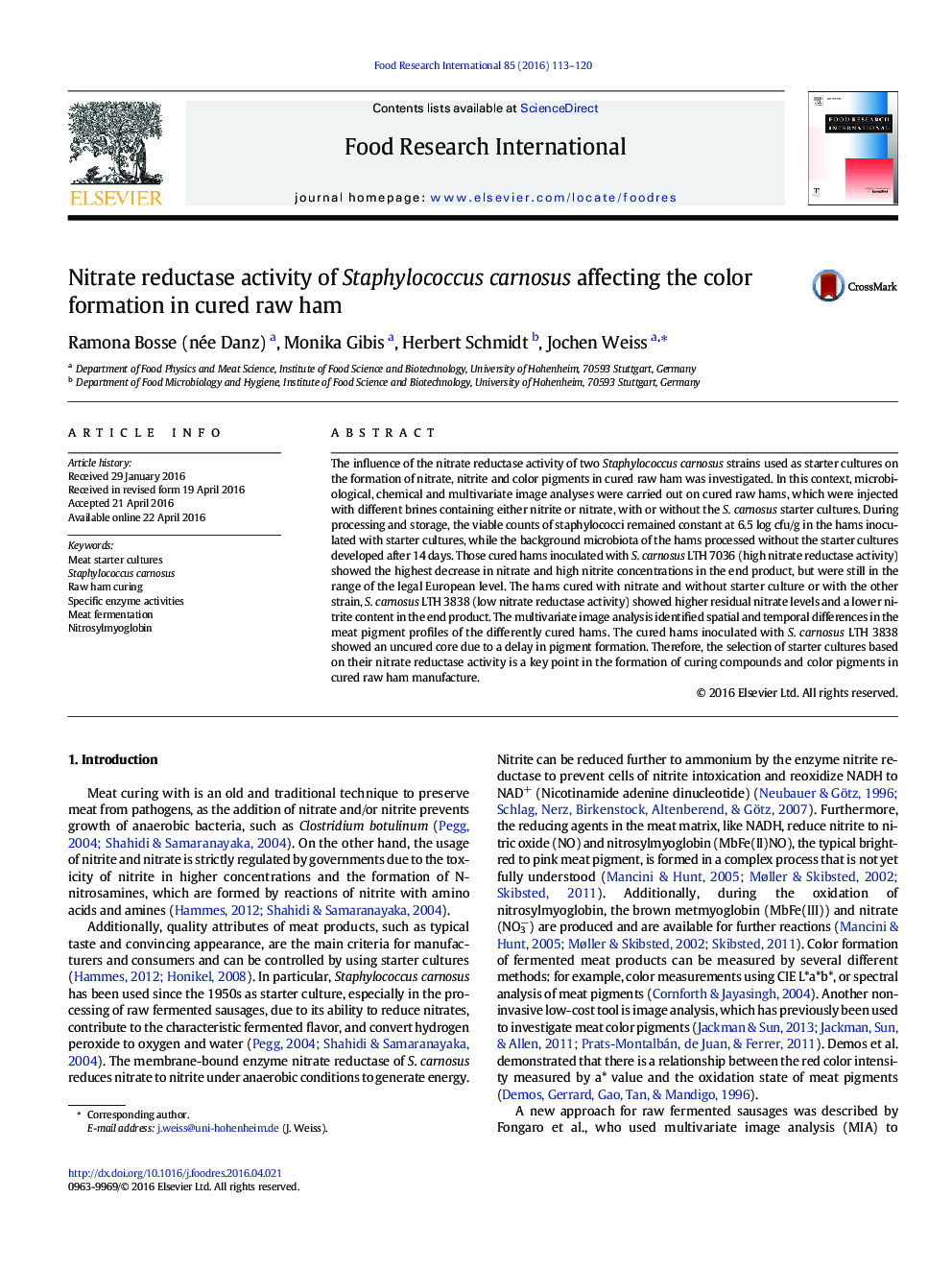| Article ID | Journal | Published Year | Pages | File Type |
|---|---|---|---|---|
| 4561046 | Food Research International | 2016 | 8 Pages |
•Nitrate and nitrite formation was highly affected by nitrate reductase activity.•Cured pigment was increased by higher nitrate reductase activity of staphylococci.•Multivariate image analysis differentiated areas based on meat pigment oxidation.•Spatial and temporal profiles of meat pigments were calculated using MIA.
The influence of the nitrate reductase activity of two Staphylococcus carnosus strains used as starter cultures on the formation of nitrate, nitrite and color pigments in cured raw ham was investigated. In this context, microbiological, chemical and multivariate image analyses were carried out on cured raw hams, which were injected with different brines containing either nitrite or nitrate, with or without the S. carnosus starter cultures. During processing and storage, the viable counts of staphylococci remained constant at 6.5 log cfu/g in the hams inoculated with starter cultures, while the background microbiota of the hams processed without the starter cultures developed after 14 days. Those cured hams inoculated with S. carnosus LTH 7036 (high nitrate reductase activity) showed the highest decrease in nitrate and high nitrite concentrations in the end product, but were still in the range of the legal European level. The hams cured with nitrate and without starter culture or with the other strain, S. carnosus LTH 3838 (low nitrate reductase activity) showed higher residual nitrate levels and a lower nitrite content in the end product. The multivariate image analysis identified spatial and temporal differences in the meat pigment profiles of the differently cured hams. The cured hams inoculated with S. carnosus LTH 3838 showed an uncured core due to a delay in pigment formation. Therefore, the selection of starter cultures based on their nitrate reductase activity is a key point in the formation of curing compounds and color pigments in cured raw ham manufacture.
Graphical abstractFigure optionsDownload full-size imageDownload as PowerPoint slide
